What is the purpose of nursing documentation
Nursing documentation is a crucial aspect of contemporary healthcare practice. It serves as a formal record of the care provided to patients and is an indispensable tool in the seamless delivery of healthcare services.
Nursing documentation encompasses a range of materials and mediums, including patient charts, care plans, progress notes, admission forms, and discharge summaries.
First and foremost purpose of nursing documentation is that, it provides a comprehensive history of a patient’s healthcare journey. This record not only includes medical diagnoses and treatments but also captures the patient’s response to interventions and their progression over time.
Such information is critical for healthcare professionals who rely on these details to make informed decisions regarding the patient’s ongoing care.
Furthermore, nursing documentation serves as a communication tool among healthcare professionals. Documenting patient information and nursing interventions ensures continuity of care when patients are transferred between different teams or departments. This helps to prevent medical errors caused by miscommunication or lack of information.
Read about: NCLEX-RN Exam-Clinical Knowledge, skills & strategies 3 ways for absolute success
Nursing documentation also plays a pivotal role in legal and quality assurance contexts. It protects nurses legally by providing evidence that they have met the standard of care required in their practice.
Additionally, it is often used for auditing the quality of nursing care, identifying areas for improvement, and promoting evidence-based practice.
Click to reveal about: Clinical Judgment-6 components to make easy success in NCLEX Exam
However, effective nursing documentation requires accuracy, consistency, and timeliness. Inaccurate or incomplete records can lead to misconceptions about a patient’s condition or needs, potentially resulting in inappropriate care decisions.
It is therefore imperative that nurses are trained to document accurately and comprehensively, ensuring that all necessary information is captured promptly.
The importance of nursing documentation
Nursing documentation is integral to achieving a high standard of care and ensuring the smooth running of healthcare operations. How nursing documentation is crucial in healthcare settings?
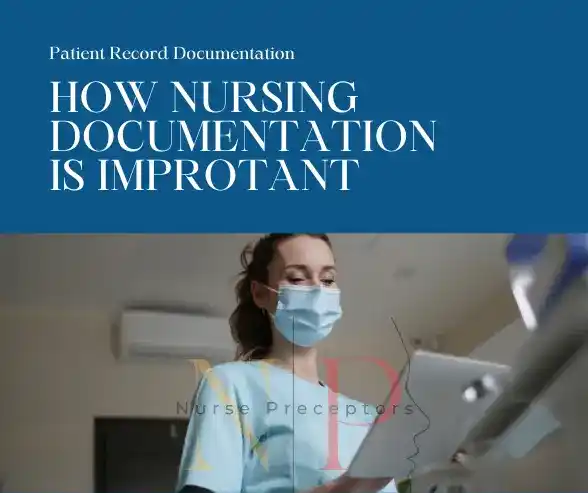
Inadequate or inaccurate nursing documentation can potentially result in denial of reimbursement claims. Therefore, it is essential to incorporate a comprehensive and factual representation of care delivery, patient’s response, and care outcomes in the nursing documentation for successful reimbursement.
What are the types of documentation in nursing?
Nursing documentation is a vital component of patient care, providing a comprehensive and accurate account of a patient’s health status, care plan, and the nursing interventions provided.
The types and forms of nursing documentation vary based on the setting, purpose, and legal requirements. The most common forms of nursing documentation include:
Click to open: Mastering the NCLEX-RN Exam: A Comprehensive Guide 3 elements of success
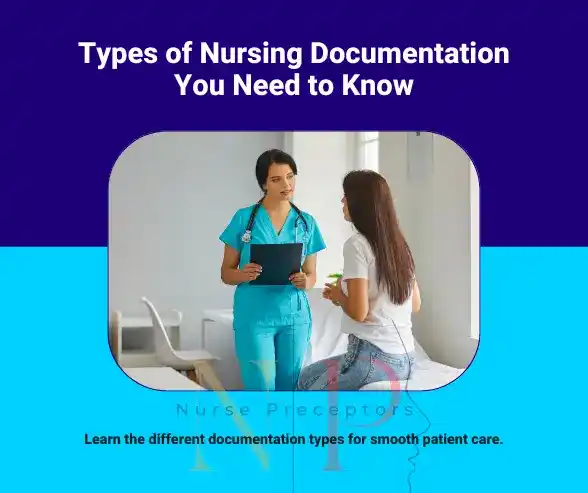
Click to reveal: A comprehensive guide to Next Generation NCLEX (NGN)
Regardless of the types and forms used, effective nursing documentation should be timely, accurate, complete, and reflective of the nursing process.
It ensures continuity of care, enhances communication among healthcare professionals, facilitates clinical decision-making, and provides legal evidence of care provided.
What are the legal aspects of documentation in nursing?
Nurses need to be aware of the legal aspects associated with documentation. The legal aspects of documentation refer to the requirements and standards set forth by regulatory bodies and professional organizations.
Nursing documentation is required by law to ensure the provision of safe, effective, and legal healthcare services. The legal requirements for nursing documentation vary by jurisdiction but generally involve maintaining accurate, complete, timely, and patient-centered documentation.
This record should include the assessment, diagnosis, planning, implementation, and evaluation of care provided.
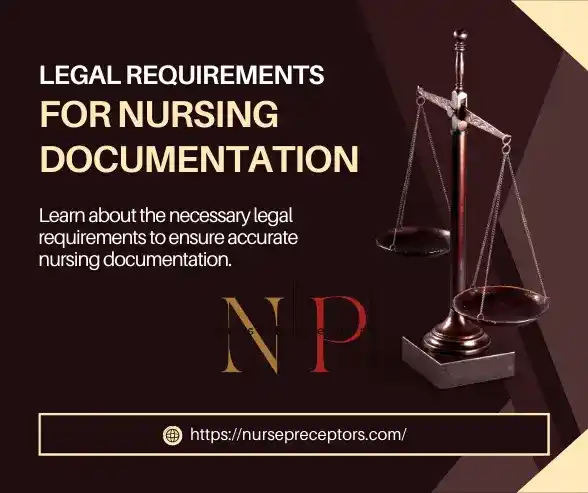
What are the 5 principles of good documentation?
To ensure compliance with legal requirements and promote effective documentation practices, nurses should follow these principles:
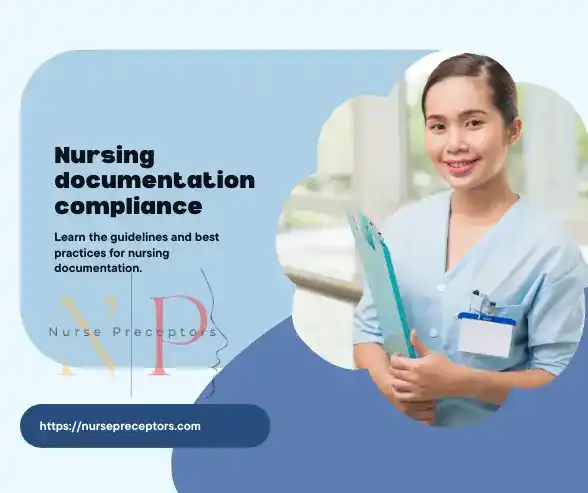
What are the common mistakes in nursing documentation?
Among the many responsibilities that nurses shoulder, maintaining accurate, clear, and comprehensive documentation is perhaps one of the most crucial. Any mistake in nursing documentation can negatively impact patient care and outcomes.
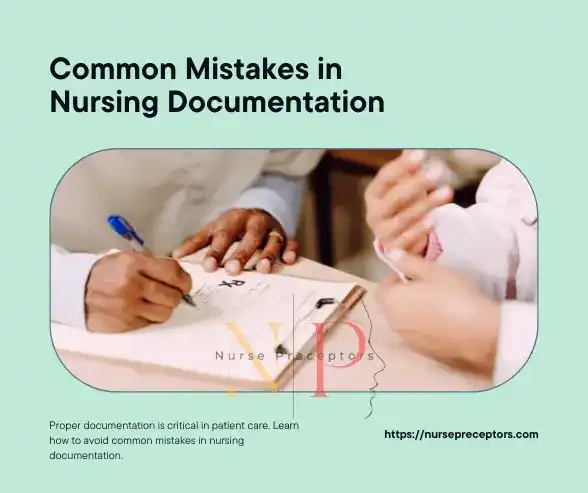
These common mistakes in nursing documentation not only pose potential risks to patient health but also can have legal implications for the healthcare provider. Therefore, nurses must be well-trained and meticulous in their documentation practices.
What are the consequences of inadequate documentation?
The consequences of inadequate nursing documentation can be significant and far-reaching, affecting both patient outcomes and the reputation of healthcare institutions.
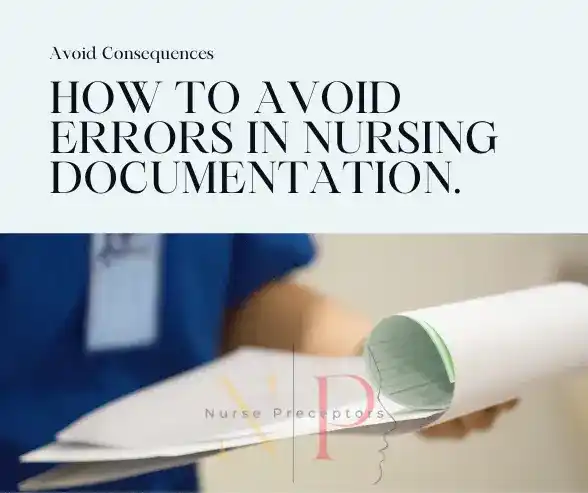
Read about: 6 Ethical Principles in Nursing-Nursing Ethical and Legal Issues
Therefore, it is essential that nursing professionals understand the importance of thorough and accurate documentation in providing high-quality patient care.
Strategies to improve nursing documentation
Challenges such as lack of time, workload, and inadequate training can affect the quality of nursing documentation. Therefore, it is important to explore various strategies to improve nursing documentation.
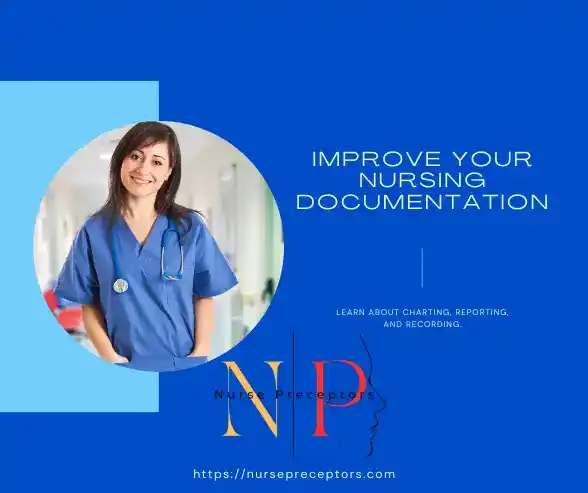
By employing these strategies, institutions can enhance the quality of nursing documentation, thus improving patient care and reducing legal risks.
Conclusion
Nursing documentation is not merely a record-keeping task but a legal responsibility crucial to patient care and safety. Nurses must understand the legal requirements, follow documentation guidelines, and avoid common mistakes to protect both patients and themselves.
By adhering to best practices and continuously improving documentation practices, nurses can ensure the provision of quality care and mitigate legal risks.
Prioritizing accurate, complete, and timely nursing documentation will ultimately contribute to safeguarding patient welfare and promoting a culture of excellence in healthcare.
References:
- Berman, A. et al. (2022) Kozier & Erb’s fundamentals of nursing: Concepts, process, and Practice. Harlow, Essex, United Kingdom: Pearson Education Limited.
- Potter, P.A. et al. (2019) Essentials for nursing practice. St. Louis, MO: Elsevier.
- DeLaune, S.C. and Ladner, P.K. (2002) Fundamentals of Nursing: Standards & Practice. Albany, NY: Delmar Thomson Learning.
- Carpenito-Moyet, L.J. (2009) Nursing Care Plans Documentation. Philadelphia, PA: Lippincott Williams & Wilkins.
- Principles for Nursing Documentation. (n.d.). http://www.nursingworld.org/~4af4f2/globalassets/docs/ana/ethics/principles-of-nursing-documentation.pdf
- Wikimedia Foundation. (2023, September 18). Nursing documentation. Wikipedia. https://en.wikipedia.org/wiki/Nursing_documentation
- Wong, C., & Cindy WongCindy Wong is a content writer and researcher for Experience Care. After finishing her MSc in marketing. (2023, June 22). Understanding the 5 legal requirements for nursing documentation. Experience Care: Long-Term Care EHR & Financial Software Solutions. https://experience.care/blog/5-legal-requirements-for-nursing-documentation/
- Documentation by the nurse. (n.d.-a). https://www.hhs.texas.gov/sites/default/files/documents/doing-business-with-hhs/provider-portal/QMP/NurseDocumentationPPT.pdf
- 10 nursing documentation tips (and why it’s important). (n.d.-a). https://www.indeed.com/career-advice/career-development/nursing-documentation-tips